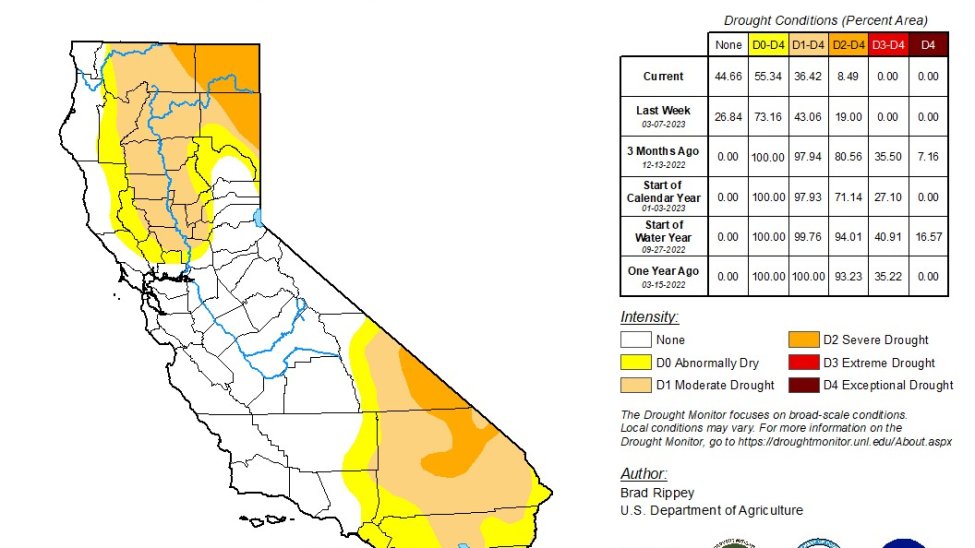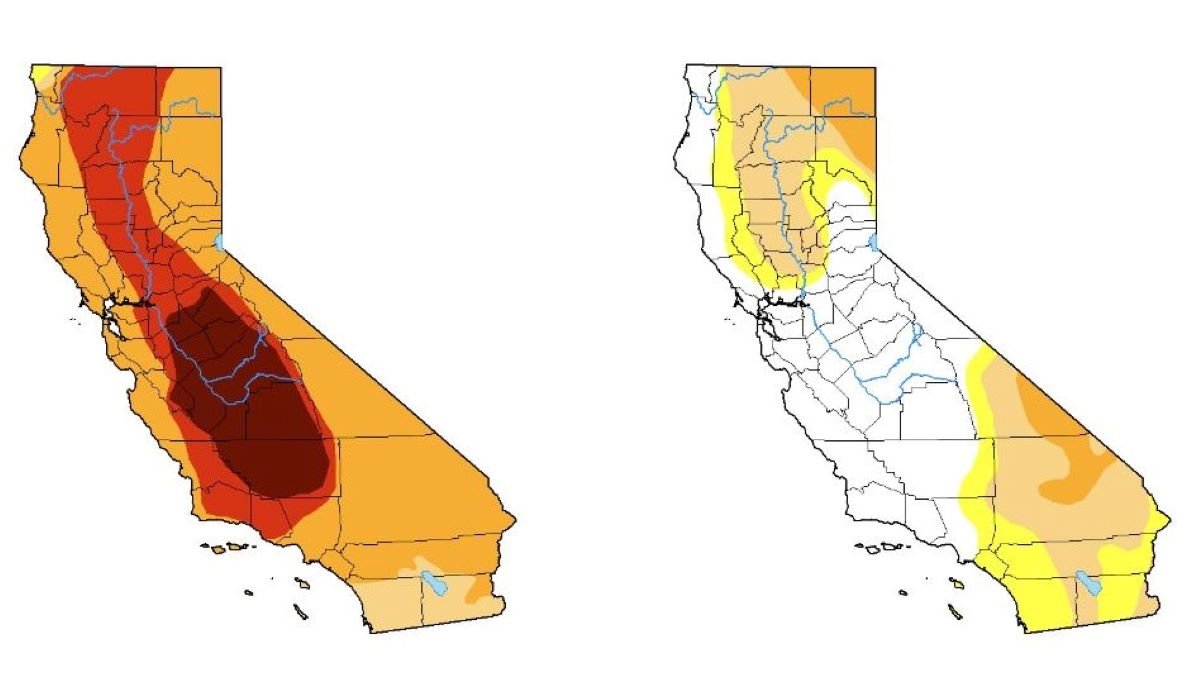Much of California’s agricultural Central Valley is no longer a drought after a series of atmospheric river-fed winter storms brought rain and snow over the past two months.
At the beginning of the hydrological year at the end of Septemberthe Central Valley was one of several regions facing extreme to exceptional drought, the two most severe drought categories in the weekly US Drought Monitor report.
But the most recent report aired on Thursday shows a stark contrast.
According to the Drought Monitor, the Central Valley and part of the California coast, from Los Angeles County west to the Oregon border, are no longer in drought.
Thirty-six percent of the state is in moderate drought, the least severe of the four drought categories in the weekly report. At the beginning of the hydrological year at the end of September, this figure was 99.76%.
Only 8% of California is experiencing severe drought, a significant improvement from 93% at the start of the water year.
Drought Monitor’s most recent report includes data available through the morning of March 14, so it does not include rainfall recorded the rest of Tuesday and Wednesday. Precipitation from this storm will be included in next week’s report.
Wetter weather is forecast for next week.
Storms in February and March caused flooding, landslides and other problems across the state. Some 27,000 people remain under evacuation orders across the state.
Snow accumulation in California over the years
As of Wednesday, an additional 61,000 people remained under evacuation warnings and emergency shelters housed more than 650 people, according to the California Governor’s Office of Emergency Services.
In central California, the rupture of a dike along the Pajaro river caused flooding in Monterey County.
“The rain, along with melting low-level snowpack and the release of dams, also caused significant water surges along many waterways in California’s Central Valley,” the Climate Monitor report said. “On March 15, the San Joaquin River in Patterson, California approached a record crest, with water rising within a foot of the February 2017 high water mark.

The storm that arrived on Tuesday is the latest in a string of atmospheric river-fed February and March systems. Downtown Los Angeles received 3.15 inches of rain from March through Tuesday. That’s well above the 2.23-inch average for the whole of March.
It is now the 14th wettest year on record for downtown Los Angeles with 23.99 inches. California’s water year begins in October, and most of the state’s annual precipitation occurs during the winter months, including snow that blankets the Sierra Nevada Mountains, the natural water reservoir of State.
California has spent most of the past 15 years in drought conditions. The most recent dry spell included one of the driest late winters on record.
However, this is still not enough to alleviate the drought affecting the state.
The state’s normal rainy season runs from late fall to late winter, but dismal rainfall left about 95% of California in severe drought in the early spring of the last year. California recorded its driest first three months of the year on record to start 2022 and by September nearly all of California was in drought.
Much of California’s water comes from snowmelt in the Sierra Nevada mountains. In an ideal scenario, storms cover the mountains with snow during the winter, forming the natural reservoir. This snow then melts in late spring and early summer, replenishing the state’s water system.
The mid-March average water equivalency of the high elevation Sierra Nevada snowpack exceeded 55 inches. That’s more than 220% of normal for an entire season, according to the California Department of Water Resources.
About a third of California’s water comes each year from snowmelt in the Sierra Nevada, a mountain range that covers the eastern part of the state. The state has an intricate system of canals and dams to capture this water and store it in huge reservoirs so that it can be used the rest of the year when it does not rain or not snow.
The snowpack is off to one of its best starts in 40 years.
This story first appeared on Telemundo 52’s sister station NBCLA. Click on here to read this story in English.

